I have posted previously in this forum regarding this same part, but I've since respun these boards and would prefer to start fresh with the problems I am currently having. On this newest board (schematic below), the first problem I am having is that when the battery (lead-acid) is unplugged, STAT2 is high and STAT1 is low. Vbatt stays at ~5V. I have a different design with the same circuit that I believe acts appropriately (Vbatt with the battery disconnected measures ~14.4V and both STAT1 and STAT2 are high).
The second issue is that the battery never indicates fully charged when the battery is plugged in. STAT2 continues to stay high, STAT1 is low. The battery does seem like it is in the float charge state--Vbatt fluctuates between ~14.3V and ~13.5V (I can also hear it charging and discharging--another concern).
The schematic for the board in question is the first picture below, the other design is the second picture. What could I be missing?
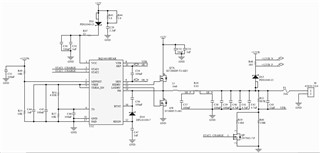
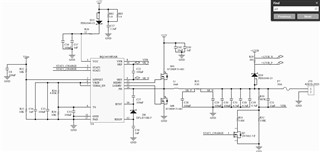


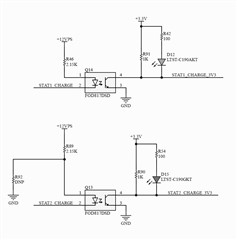
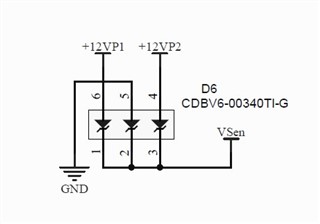
 These peaks occur when the battery is charging. I checked the other design and the same thing happens, but stops when the charging is complete.
These peaks occur when the battery is charging. I checked the other design and the same thing happens, but stops when the charging is complete.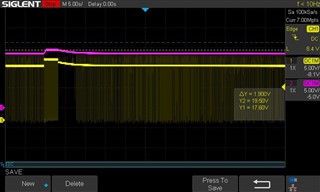 PH pin
PH pin PH pin of working board
PH pin of working board Vbatt
Vbatt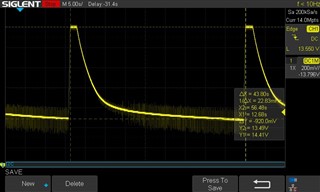 Zoomed in Vbatt (clicking noise is happening when the spikes are present)
Zoomed in Vbatt (clicking noise is happening when the spikes are present)
 Zoomed out
Zoomed out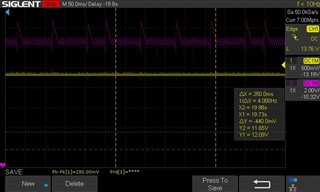 zoomed in a bit more
zoomed in a bit more zoomed in
zoomed in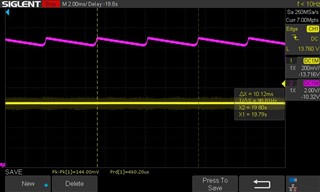 better resolution on Vbatt
better resolution on Vbatt